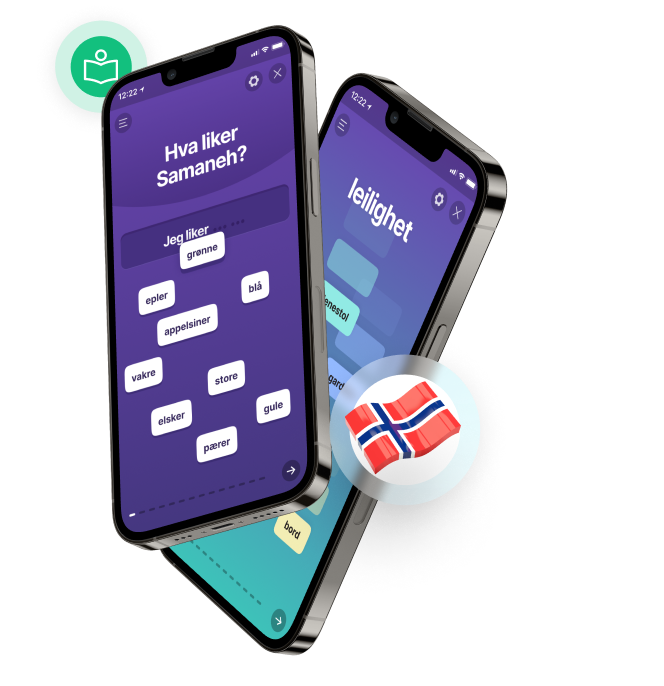Giving orders in Norwegian
Verbs in the imperative
This week we’ll look at verbs and how they can work in Norwegian. We’ll give you a short and sweet overview over all the ways in which you can conjugate verbs. But our main focus is - as the heading suggests - how to make people do what you tell them, a.k.a. How to tell people what to do?

ACTION!
Verbs - words that describe an action - are often regarded as the most important word class in grammar. Action happens in time, and so much of your work with verbs becomes learning and practicing how to conjugate (bøye) verbs in the different times you want to express:
I often say that conjugating verbs is like time travel; by adding endings to the verbs or changing their nucleus, i.e. their basic, shortest form, we express different times or tempus of the action.
COMMON TIMES OF THE VERB
Let us just quickly run through all the times of the verb that you ‘ll ever encounter in Norwegian :
Presens - now, present tense, ex. Jeg spiser
1. Futurum ( presens futurum ) ex. Jeg skal spise, jeg vil sove
2. futurum (presens futurum perfektum) ex. Jeg har sikkert allerede spist når du kommer hjem.
Preteritum (link) past tense , descriptive ex. Jeg spiste middag alene.
Perfektum ( link) past tense , completed action ex. Jeg har spist.
Pluskvamperfektum ( more past than past ) ex.Jeg hadde spist.
1. Kondisjonalis ( also called preteritum futurum) ex. Jeg skulle spise, men så ringte telefonen.
2. Kondisjonalis ( hypothetical ) ex. Jeg ville ha spist russisk kaviar hvis jeg hadde råd.
COMMON FORMS OF THE VERB
There are two more ways to express a verb which have nothing to do with time - They are the infinitive and the imperative forms of the verb:
INFINITIVE
This is the neutral, almost abstract way of "presenting" a verb. There is no time suggested, simply the action itself: f.eks
Jeg har lyst til å spise
It's the action of eating which is important, nothing else. Note :å = infinitivsmerke ( to in english) is the infinitive marker . Note: In most cases, the verb in infinitive ends with an "e" .
å snakke å spise å lage
IMPERATIV
The word imperativ comes from the Latin word imperare - to order. We create imperativ by deleting the -e ending of the infinitiv form. Thus the imperativ form is identical with the "nucleus " of the verb.
Examples: Kom her - Come here Sitt ned - sit down Vær så god - Be so good Gi meg den - give me that Kos deg ! - have a great time !
Here are a couple of useful rules
Source: Språkradet.no
1.Nucleus ends in "mm" - delete the last -m in writing.
Kom her! ( å komme - to come) Stem på Kystpartiet ! ( å stemme - to vote) Glem ikke telefonen ! ( å glemme - to forget)
2. Nucleus ends in a stressed vowel, the imperative form = the infinitive.
Prøv noe nytt! (from å prøve = to try)
Still opp og regn ut (from å stille opp and å regne)
Vær stille! (from å være) be quiet!
Kom heller i morgen (from å komme)
Gå stille (from å gå = to walk )
3. When the nucleus ends in an unusual group of consonants, the imperative forms look really weird and can be difficult to pronounce: behandl, endr, forandr, forkludr, klatr, pensl, rødm, saktn, smadr, smuldr, stempl, sykl, tråkl, vegr, åpn osv.
In such cases, we add an "e" to the imperative form. The result is then an imperative form which looks identical to the infinitive.
Some other interesting verb facts
VERB or VERBAL?
The term verb is used for the word class (ordklasse) verbal for the function in a clause / phrase (setningsledd)
Not sure about the difference? Check out this Norskblogg article for mor information.
STRONG AND WEAK verbs
Irregular verbs are called sterke verb (strong verbs) in Norwegian. Regular verbs are called svake verb (weak verbs).
Learn more about weak and strong verbs in Norwegian here!
Would you like to learn more Norwegian?
Sign up today and learn Norwegian with our game-based online language course «Samanehs reise», from beginner level to fluent speaker!
From NOK 375 per måned



